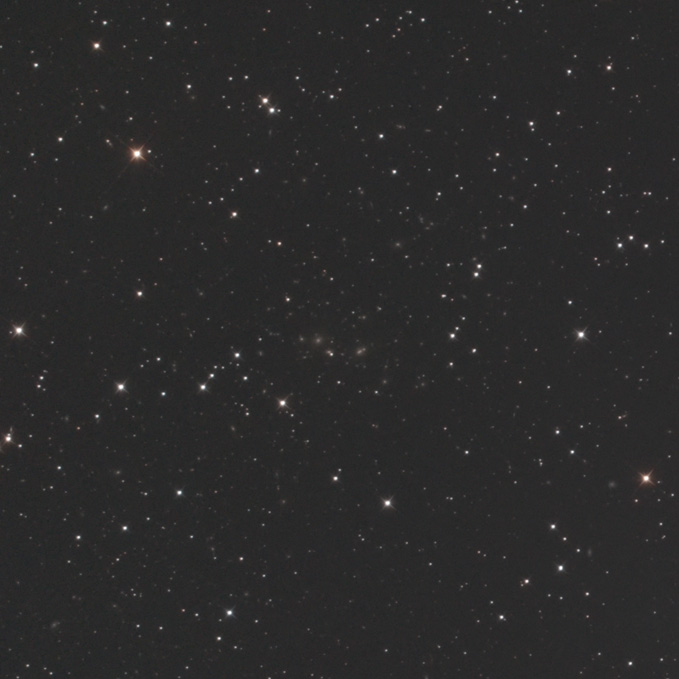| Date & Time: | May 3 2024, from 21:53 to 22:05 JST(+0900) |
| Composed 10 shots with 8 minutes exposed |
| Optical: | TAKAHASHI 16cm(6.3") epsilon (f=530mm, F3.3) |
| with LPS-D1 Light-pollution suppression filter |
| Auto-guided with TAKAHASHI JP Equatorial & SBIG STV |
| CMOS Camera: | ZWO ASI2600MC Pro (Cooled temp.: -15°C) |
| Location: | Ooizumi, Hokuto city, Yamanashi pref. |
| Abell 2256 / Galaxy Cluster, type 2 3 II-III |
|---|
| R.A. | 17h 03m 42.0s (2000.0) |
|---|
| Dec. | +78°43' 00" (2000.0) |
|---|
| Apparent Size | 56.0' |
|---|
| # of Galaxies | 88 |
|---|
| Red Shift | 0.0581 |
|---|
| Magnitude | 15.3 |
|---|
| Distance | 780 million light yrs. |
|---|
| Galactic supercluster | - |
|---|
This captures a galaxy cluster lurking about 4 degrees east of ζ Ursae Minoris.
Positioned at a declination of +78 degrees, it can be observed almost year-round in the northern hemisphere.
By clicking the button in the upper right corner of the page, you can switch between an image with stars in the Milky Way Galaxy removed and the original image.
The distance of this galaxy cluster from the Milky Way is approximately 780 million light-years, spanning nearly 1 degree, and containing around 90 member galaxies.
The relatively bright three galaxies visible in the central region are, from left to right, UGC 10726, CGCG 355-26, and NGC6331.
This galaxy cluster is believed to have formed from the merger of three smaller galaxy clusters in the past.
Observations using X-rays and radio waves have revealed a filamentary structure in the central region of the galaxy cluster extending over 2 million light-years, thought to be caused by shockwaves resulting from collisions.
The image has been cropped to an equivalent field of view of 0.7×0.7°.
|

